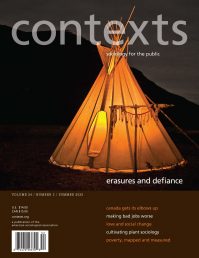Battling for Native American Lands

Congress must enact legislation to “fix” the 2009 U.S. Supreme Court decision in Carcieri v. Salazar, 555 U.S. 379. This legislative fix would reaffirm the propriety of many federal land acquisitions made on behalf of American Indians since 1934. The fix would also extend to the Secretary of the Interior’s authority to approve such acquisitions in the future. Both were called into question by the Carcieri decision.
A Brief History of Tribes and Tribal Lands
Since the days of the earliest explorers in the Western Hemisphere, non-Natives have asked, “what to do with the Indians?” To put it more bluntly, “how do we solve the Indian problem?” As laid out in the standard legal reference Cohen’s Handbook of Federal Indian Law, there are several periods of Native American historical policy in the United States. During these periods, the federal government has attempted to answer this question, albeit in a schizophrenic manner, along with deciding whether a land base should (or should not) be established to assist in Native peoples’ settlement within the surrounding society.
During the first period of American colonialism through the founding of the country, Indian affairs became centralized, and eventually the Constitution imbued Congress with authority to “regulate Commerce…with the Indian Tribes” (Art. I, § 8, cl. 3) as well as the President with the power to make treaties with tribes with Senate consent (Art. II, § 2, cl. 2). This constitutional power firmly placed Indian affairs in the federal government’s purview.
The next period during the early to late 1800s focused on removal and resettlement of tribal populations. It saw the issuance of U.S. Supreme Court Chief Justice John Marshal’s famous trilogy of Indian law cases and their enduring principles, namely: (1) the “discovery doctrine” gave European powers ultimate title to already-occupied Native lands (Johnson v. M’Intosh, 21 U.S. (8 Wheat.) 543 (1823)); (2) tribes have a unique status as “domestic dependent nations” and a relationship with the federal government that is similar to that of “a ward to his guardian” (Cherokee Nation v. Georgia, 30 U.S. (5 Pet.) 1 (1831)); and (3) tribes occupy their own territory in which state laws have no effect (Worcester v. Georgia, 31 U.S. (6 Pet.) 515 (1832)).
During this period, as westward expansion pressed forward, tribes were restricted to land set-asides. Churches and others used such land bases as platforms for “civilizing” Native people, through Christian boarding schools and the like. The reservation system gave way to allotment, at once a discontinuation of the reservation system and a continuation of civilizing efforts. It broke up communally-held reservation lands and distributed them to individual Indians to be temporarily held in trust by the U.S., then conveyed to the individual Indians free and clear. This policy sought to make individual Natives “productive Americans” through farming and other Western land use methods. However, it ultimately resulted in the transfer of nearly two-thirds of Native-held lands into often-unscrupulous non-Native hands.
The ravage of allotment on tribal land bases eventually resulted in a policy reversal with the 1934 enactment of the Indian Reorganization Act (IRA). The IRA acknowledged allotment’s failures and that tribes should be kept intact, developed as full-fledged governments, and settled on re-established land bases to be acquired in permanent federal trust status. The nation’s “Indian problem” policy subsequently would swing twice more, once towards completely terminating the federal-tribal trust relationship and then ultimately towards today’s policy encouraging self-determination and self-governance by tribes. Nevertheless, the IRA remains on the books and has enduring effects.
The frenetic policies aimed at solving the “Indian problem” have only multiplied the questions needing answers to solve that problem, and those questions remain contested to this day. For example, what historical groups of people are to be deemed tribal wards of the federal government’s protective guardianship, for whom land acquisitions can be carried out?
In its guardianship role, if the federal government refused to acknowledge or act upon its obligation towards some of its tribal wards in years past, should it still be on the hook for their protection and benefit today? Furthermore, could a state ever have stepped in to legally usurp a power granted to the federal government by the U.S. Constitution? Carcieri laid these questions bare.
The Narragansett Tribe & Carcieri Decision
It is important to understand at least the absolute basics of the history of the tribe involved in the Carcieri case, or this all may seem theoretical and removed. The Narragansett Tribe of Rhode Island fought in the King Phillip’s War of 1675. The Tribe eventually accepted English crown governance and submitted to the rule of its Colony of Rhode Island. In 1880, the State of Rhode Island purported to “detribalize” the community with state laws that ended Tribal authority and sold off Tribal lands. It would take the federal government a century to come to the aid of the Narragansett Tribe. In 1983 the government formally acknowledged the Tribe’s then-current and historical existence as a group entitled to the federal-tribal guardian-ward relationship. However, even that acknowledgment would fall short with Carcieri.
The Carcieri controversy stems from language in the IRA, which again was intended in part to atone for prior failed land policies by giving the Secretary of the Interior the authority to acquire land in federal trust on behalf of “Indian” tribes and individual “Indians” (formerly 25 U.S.C. § 465, recodified to 25 U.S.C. § 5108). That 1934 grant of authority has been and still is the primary means by which a land base may be created for tribes. The IRA defines in relevant part the term “Indian” for whom such authority may be exercised as “all persons of Indian descent who are members of any recognized Indian tribe now under Federal jurisdiction…” (formerly 25 U.S.C. § 479, recodified to 25 U.S.C. § 5129).
For nearly 75 years after IRA enactment, the Interior Secretary and the federal Bureau of Indian Affairs interpreted the word “now” to mean at the time of the tribe’s or the individual Indian’s application to have land acquired in trust. As long as a tribe historically had been recognized as a tribe by the federal government and such recognition existed as of the time of application, the Secretary had authority.
In Carcieri, a 6-3 majority of the justices on the U.S. Supreme Court, led by the opinion of Justice Clarence Thomas, turned that practice on its head. Justice Thomas’s opinion determined that the word “now” in the law referred to the date the IRA took effect, namely June 18, 1934, and what mattered was whether a tribe was “under Federal jurisdiction” as of that date.

National Congress of American Indians, Flickr CC
Most immediately, this operated to the detriment of the Narragansett Tribe, whom the Court determined to have been under colonial and state, rather than federal, jurisdiction throughout its history. Therefore, the Secretary lacked the authority to acquire land in trust for the Tribe when he purportedly took a 31-acre parcel in trust in 1998. To this day, scholars and attorneys scratch their heads at the outcome of this case. If the federal government has held ultimate authority over Indian affairs since the Constitution’s enactment in 1789, and if the Narragansetts were determined to be a historically-continuous tribe and formally acknowledged as such by the federal government in 1983, how could they not have been “under Federal jurisdiction” in 1934?
The detrimental effects of Carcieri were to grow over the next decade as tribal foes across the country exploited every possible linguistic nuance in the IRA’s definition of “Indian.” Justice Thomas initially fueled the fire by linking a date to the word “now” without giving any indication of what it meant to be “under Federal jurisdiction” as of that date or to be a member of a “recognized Indian tribe.” Furthermore, the concept of a “recognized” Indian tribe was neither explained in the IRA nor in any prior federal legislation. In 1934, the federal government simply understood or “recognized” groups of Native people to exist as historical tribes. However, the process of “recognizing” a tribe’s current and historical existence has been an ongoing process both before and after 1934. As a layperson’s example, Pocahontas’s relations in the Pamunkey Tribe of Virginia only received official federal recognition in 2015, but the federal government has certainly known of the Tribe’s existence for centuries.
What does all of this practically mean? It means a tribe could be missing out on federal benefits aimed at developing remote tribal trust lands because a local citizens group with an ax to grind has called into question the tribe’s 1934 federal jurisdictional status and the legitimacy of a subsequent trust land acquisition. It means a local government with a poor track record of tribal relations—and which the Constitution never envisioned having a say in tribal affairs—can now file a lawsuit to delay a tribal casino project for decades, as the Secretary’s authority to acquire the necessary trust land plays out in court under Carcieri. It ultimately means Congress has abdicated its trust responsibility towards Native peoples for over a decade, and it means its well past time to fix this.
